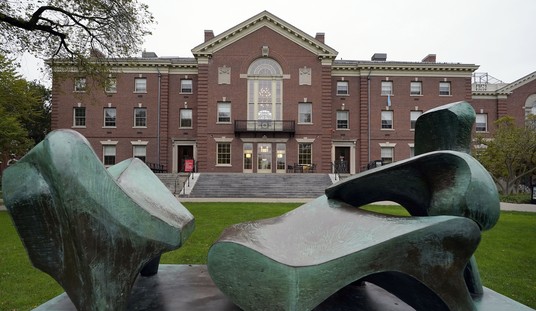While I often disagree with Nick Kristof’s take on public policy, I have a lot of respect for his willingness to travel to some of the worst places in the world to write about poverty and oppression. Last week, Kristof traveled not to Somalia or Sudan but to Appalachia, to discover what causes and sustains American poverty. In part, Kristof admitted, it was the very programs meant to solve them:
THIS is what poverty sometimes looks like in America: parents here in Appalachian hill country pulling their children out of literacy classes. Moms and dads fear that if kids learn to read, they are less likely to qualify for a monthly check for having an intellectual disability.
Many people in hillside mobile homes here are poor and desperate, and a$698 monthly check per child from the Supplemental Security Income program goes a long way — and those checks continue until the child turns 18.
“The kids get taken out of the program because the parents are going to lose the check,” said Billie Oaks, who runs a literacy program here in Breathitt County, a poor part of Kentucky. “It’s heartbreaking.”
This is painful for a liberal to admit, but conservatives have a point when they suggest that America’s safety net can sometimes entangle people in a soul-crushing dependency. Our poverty programs do rescue many people, but other times they backfire.
Some young people here don’t join the military (a traditional escape route for poor, rural Americans) because it’s easier to rely on food stamps and disability payments.
Kristof’s column has to be read in full to be appreciated. He isn’t engaging in liberal apostasy by condemning safety-net programs in total, but he does acknowledge that they need reform to alleviate poverty rather than institutionalizing it. Safety-net programs have improved the quality of life in the US — for instance, 35% of elderly Americans lived in poverty in 1959, compared with only 9% today under a very different definition of poverty. However, children are more likely to be trapped in these systems, thanks in part to a big pro-senior tilt in safety-net programs that comes from the political power of that demographic.
Some conservatives believe the only way to reform safety-net programs is to end them altogether, but these programs remain so politically popular as to be unassailable. Repeal is impossible, even if it was the most desirable outcome (which I don’t believe is true). In my column for The Fiscal Times today, I offer the keys to reforming safety-net programs to recalibrate them to the service of children, and to reducing and eliminating poverty rather than perpetuating it:
Clearly, if we want to keep our social safety net programs – and there is very little political will to do otherwise – we need to re-engineer them to orient efforts to preparing children for success. To that end, we should try to find ways to improve education as a means to escape poverty and strengthen the institution of marriage. We need to find and eliminate marriage penalties in welfare programs, and perhaps look for ways to reward marriage in households with children. That also means orienting the state approach to marriage not as a licensing opportunity focused on adult outcomes, but as an institution where the state interest lies solely in protecting and nurturing children.
Welfare programs should also emphasize the need for self-sufficiency. Ironically, we already accomplished that in the mid-1990s with a rare case of real entitlement reform, in which Congress and President Bill Clinton created incentives for welfare recipients to find work. That requires an economy that produces real job creation, but also consistency in enforcing those provisions. President Barack Obama undermined them by executive order earlier this year, a move that should be rescinded as soon as possible.
We can do better on education in part by allowing resources to flow to non-government players through school choice. Too many families have no opportunity to offer their children any other option but the failing public school closest to their house. The substandard education that children in these schools receive doom them to poverty later just as surely as the easy path from Supplemental Security Income derived from claims of intellectual disability as a child to adult disability checks. School choice for poor families would enable parents to make choices that will allow their children to compete later for jobs, and to produce innovation that will lift even more children out of poverty in later generations.
Finally, while there is no will to eliminate social safety-net programs, they may face doom anyway on the basis of simple math. Governments at every level have incurred liabilities for safety-net programs that they have no realistic chance of fulfilling. Politicians expand programs without paying for what has already been promised, and those who argue for reform are shouted down by people who argue by anecdote.
If we want to save these programs to help the truly needy and lift people out of poverty, we need to put these programs on solid fiscal footing. That will mean rethinking every such program’s benefits, eligibility, and administration in a way that puts costs at a reasonable and sustainable level. Otherwise, we face a fiscal crash that would discredit these programs forever.
Doing nothing is not an option. Doing nothing guarantees that people — especially children — get strangled by the safety nets intended to help them, and doing nothing means that the programs will soon collapse on their own and set all of the needy adrift. The responsible and compassionate path is reform that learns from the failures of the last five decades and puts the US on path to provide prosperity to everyone who desires it.








Join the conversation as a VIP Member